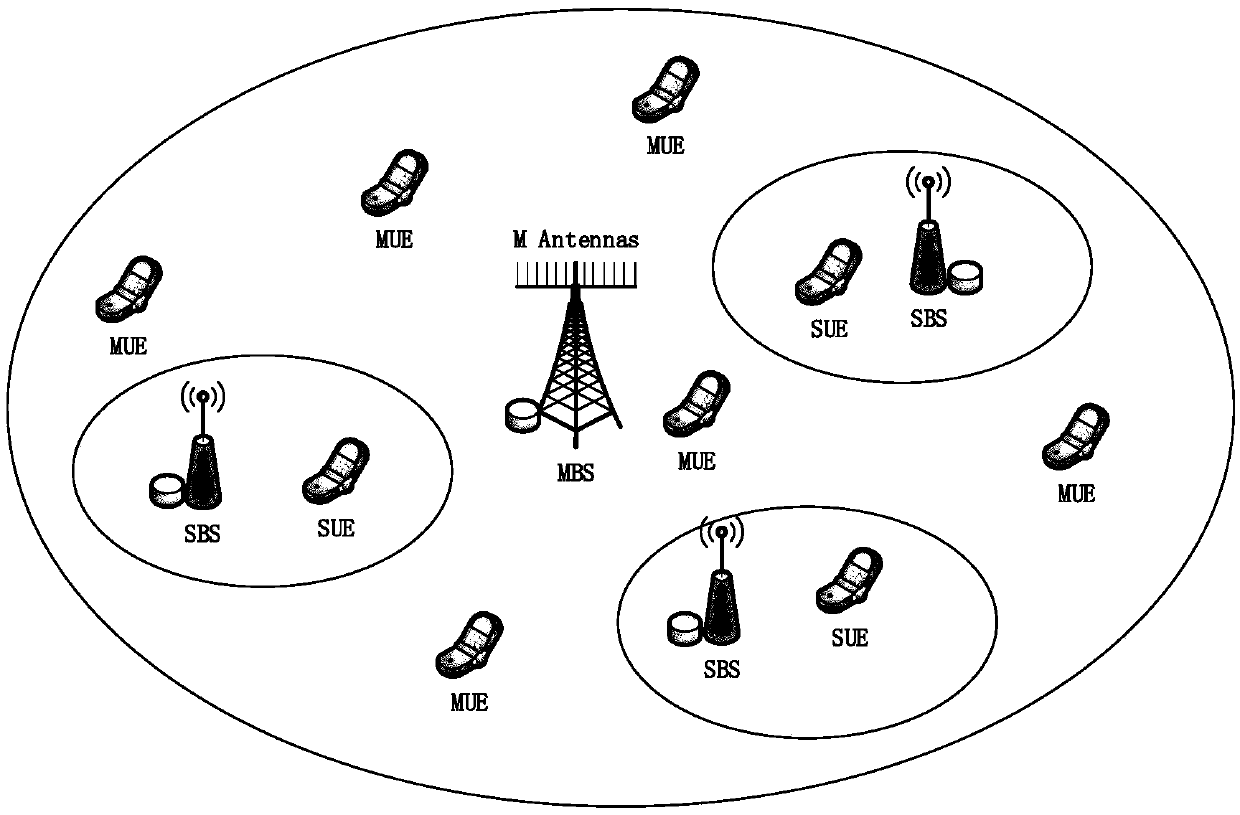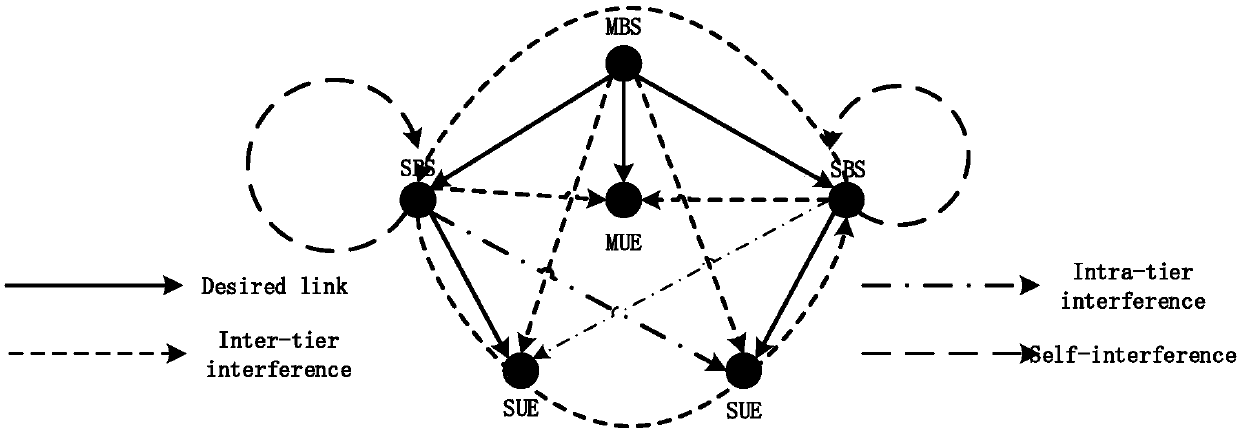Wireless access and backhaul joint resource allocation method for in-band full-duplex system
A wireless access and resource allocation technology, applied in transmission systems, digital transmission systems, duplex signal operations, etc., can solve problems such as complex networks, difficult deployment of backhaul links, and high costs for operators
- Summary
- Abstract
- Description
- Claims
- Application Information
AI Technical Summary
Problems solved by technology
Method used
Image
Examples
Embodiment Construction
[0054] The preferred embodiments of the present invention will be described in detail below with reference to the accompanying drawings.
[0055] see figure 1 , figure 1 It is a schematic diagram of the scene of the in-band full-duplex system of the present invention. In the example of the present invention, a downlink transmission scenario of a two-layer dynamic heterogeneous cellular network is considered. The network is composed of a macro base station equipped with multiple antennas and several single-antenna self-backhaul small base stations within its coverage area, and all the above-mentioned The base stations share the entire possible spectrum. Self-backhaul small base stations are equipped with full-duplex hardware and have full-duplex capabilities. The wireless channel includes two parts: slow fading composed of path loss and shadow fading, and Rayleigh flat fast fading. In the figure, MUE and SUE represent macro cell users and small cell users respectively, and ...
PUM
 Login to View More
Login to View More Abstract
Description
Claims
Application Information
 Login to View More
Login to View More - R&D
- Intellectual Property
- Life Sciences
- Materials
- Tech Scout
- Unparalleled Data Quality
- Higher Quality Content
- 60% Fewer Hallucinations
Browse by: Latest US Patents, China's latest patents, Technical Efficacy Thesaurus, Application Domain, Technology Topic, Popular Technical Reports.
© 2025 PatSnap. All rights reserved.Legal|Privacy policy|Modern Slavery Act Transparency Statement|Sitemap|About US| Contact US: help@patsnap.com



